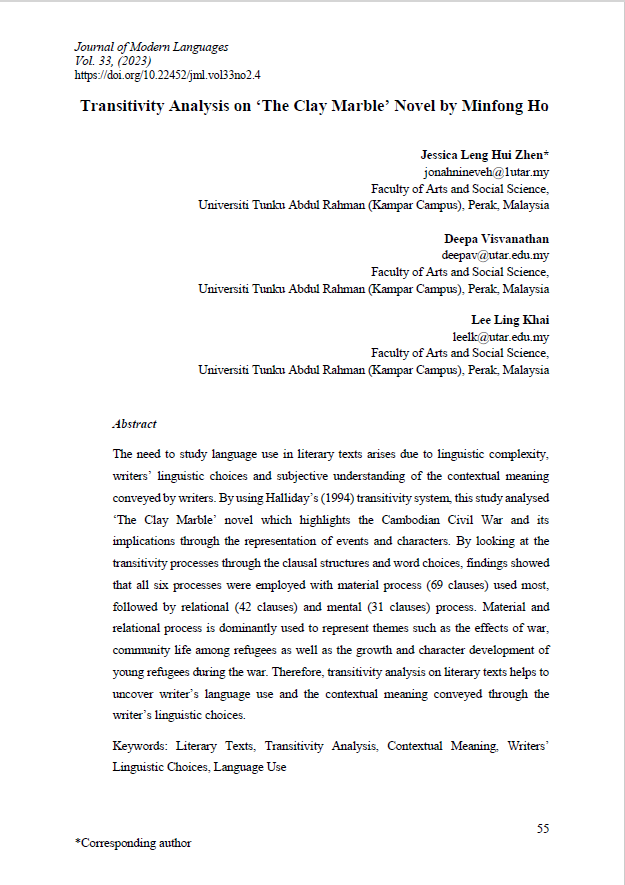Transitivity Analysis on ‘The Clay Marble’ Novel by Minfong Ho
Main Article Content
Abstract
The need to study language use in literary texts arises due to linguistic complexity, writers’ linguistic choices and subjective understanding of the contextual meaning conveyed by writers. By using Halliday’s (1994) transitivity system, this study analysed ‘The Clay Marble’ novel which highlights the Cambodian Civil War and its implications through the representation of events and characters. By looking at the transitivity processes through the clausal structures and word choices, findings showed that all six processes were employed with material process (69 clauses) used most, followed by relational (42 clauses) and mental (31 clauses) process. Material and relational process is dominantly used to represent themes such as the effects of war, community life among refugees as well as the growth and character development of young refugees during the war. Therefore, transitivity analysis on literary texts helps to uncover writer’s language use and the contextual meaning conveyed through the writer’s linguistic choices.
